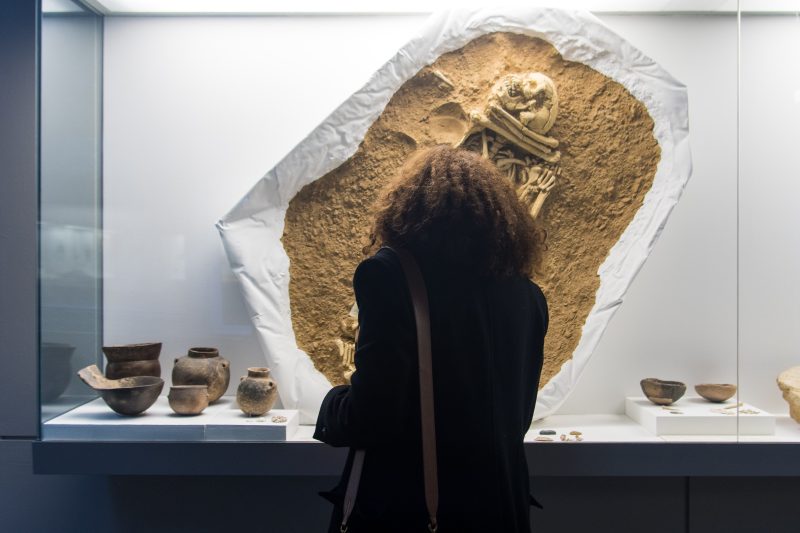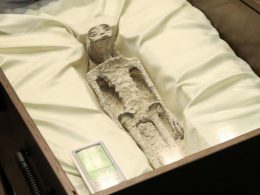In every corner of the world and throughout history, civilizations have left behind traces of their existence in the form of artifacts. These remnants offer invaluable insights into their cultures, religions, and the values held dear by their people.
From fragments of discarded pottery to exquisitely crafted artworks or even human remains, these artifacts become a focal point for researchers, who dedicate countless hours to unraveling their secrets, providing us with a wealth of historical knowledge.
For instance, the composition of centuries-old bones can unveil the dietary habits of past civilizations, shedding light on their way of life.
Once thoroughly studied, these precious artifacts find a new home in museums, where they are displayed for the public to appreciate.
While their historical significance is immeasurable, museums are often tasked with assigning a monetary value to these artifacts for insurance purposes.
In some cases, these remarkable pieces may have changed hands through purchases and sales. There are certain artifacts that hold such immense value that they stand as some of the most expensive treasures a person will ever have the privilege of witnessing.
In this compilation, we have curated a list of 15 exceptionally valuable artifacts currently on display in museums across the United States and around the world.
Each of these artifacts offers a captivating glimpse into our shared human heritage and serves as a testament to the skill, creativity, and profound historical legacy of the civilizations from which they originate.
Leonardo da Vinci’s ‘The Mona Lisa’
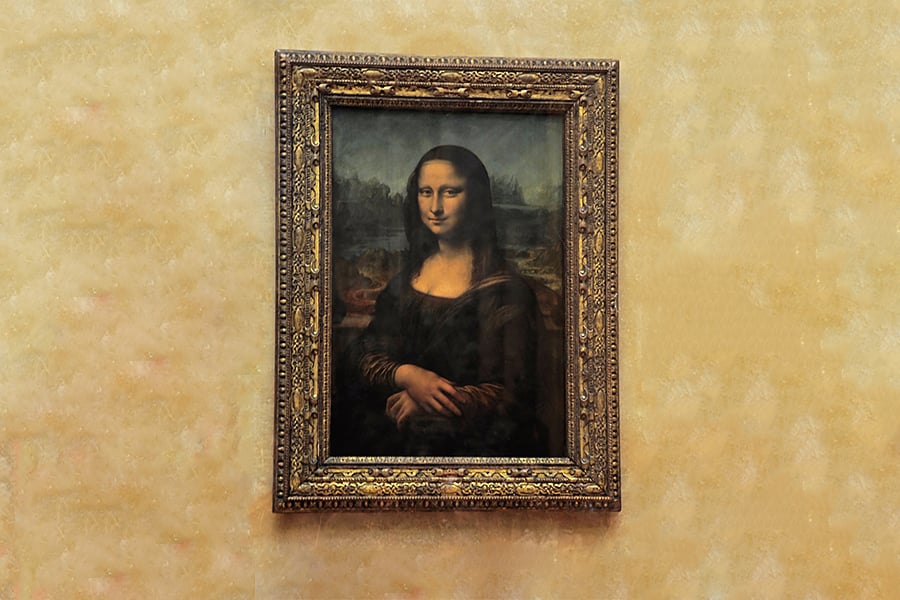
The Mona Lisa, undoubtedly one of the most renowned works of art in the world, is a masterpiece that has captivated audiences for centuries.
Created by the genius mind of Leonardo da Vinci between 1503 and 1506, with subsequent work done until 1517, this iconic painting holds an esteemed place in art history.
Permanently residing in the Louvre Museum in France, the Mona Lisa attracts an astonishing number of visitors, with approximately 6 million individuals flocking to admire her enigmatic smile and captivating gaze each year.
Beyond its artistic and cultural significance, the Mona Lisa also holds remarkable monetary value. With an appraised worth of nearly $800 million, it stands as one of the most valuable paintings in the world. Its profound impact on the art world and its historical significance have contributed to its esteemed status.
Furthermore, the Mona Lisa holds the highest insurance value of any painting in history, a testament to its immense importance and the efforts made to safeguard this invaluable treasure.
The enduring allure of the Mona Lisa lies in its enigmatic qualities and the technical brilliance exhibited by Leonardo da Vinci.
The artist’s mastery of techniques such as sfumato, which creates soft transitions between colors and tones, adds depth and a sense of realism to the painting. The enigmatic s
The Rosetta Stone
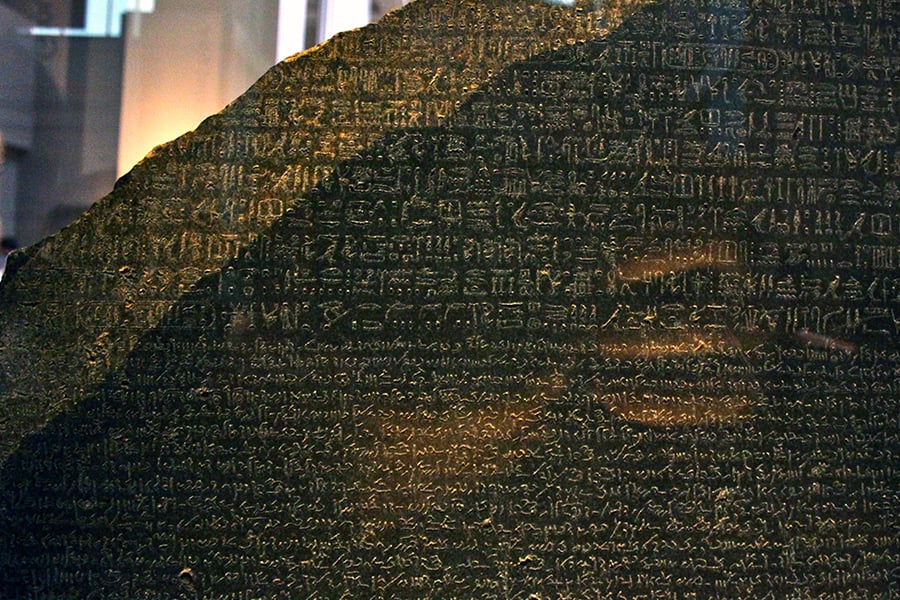
Nestled within the esteemed halls of the British Museum, a remarkable artifact stands as a testament to the ancient world’s intellectual triumphs.
This granodiorite stone slab, bearing inscriptions, unveils a momentous decree issued in Memphis, Egypt, in the year 196 B.C.
What makes this artifact truly extraordinary is the fact that the decree is recorded in three distinct scripts: Demotic Egyptian, Greek, and Egyptian hieroglyphs. Its discovery and subsequent study played a pivotal role in unraveling the enigmatic hieroglyphic script for the very first time.
The implications of deciphering hieroglyphs extend far beyond the realms of archaeology and history. The intricate inscriptions on this stone slab provided scholars with a crucial key to unlocking the secrets of ancient Egyptian civilization.
Prior to its discovery, hieroglyphs had remained an impenetrable code, confounding the minds of researchers for centuries. However, with the aid of this inscription, scholars were finally able to bridge the linguistic and cultural gaps, gaining invaluable insights into the language, customs, and beliefs of ancient Egypt.
The decipherment of hieroglyphs marked a milestone in the field of Egyptology and sparked a profound transformation in our understanding of this illustrious civilization. It paved the way for a deeper exploration of ancient Egyptian literature, history, and religious texts.
The knowledge gained from the deciphered hieroglyphs has enabled us to appreciate the vast wealth of knowledge and wisdom preserved by the ancient Egyptians, shedding light on their societal structures, religious practices, and artistic endeavors.
Today, as visitors gaze upon this granodiorite slab at the British Museum, they witness not only a relic of the past but also a testament to human curiosity, ingenuity, and the unyielding pursuit of knowledge.
The significance of this artifact transcends its physical form, embodying the power of language and its ability to connect us with civilizations that once flourished in the ancient world.
It serves as a reminder of the profound impact that deciphering hieroglyphs has had on our understanding of the past and our appreciation of the rich tapestry of human history.
The Dead Sea Scrolls

The significance of the ancient biblical manuscripts discovered in the 20th century cannot be overstated. Regarded as the oldest known biblical texts, these scrolls stand as a monumental archaeological find, captivating scholars and enthusiasts alike.
The discovery of these ancient treasures has shed new light on our understanding of the Bible and its historical context.
Divided between two prestigious institutions, the scrolls are housed in both the Rockefeller Museum in East Jerusalem and the Israel Museum in West Jerusalem. Each location offers a glimpse into the rich tapestry of ancient biblical texts and the profound impact they have had on religious, cultural, and historical studies.
The scrolls found in the Rockefeller Museum and the Israel Museum are a testament to the painstaking preservation efforts and scholarly endeavors devoted to unlocking their mysteries.
These texts, written in Hebrew and Aramaic, provide valuable insights into the religious and cultural practices of ancient Israel and the surrounding regions.
They encompass a variety of biblical books, including the well-known texts such as the Book of Isaiah, Psalms, and Deuteronomy, as well as lesser-known works.
The discovery of these biblical manuscripts has transformed our understanding of biblical literature and its transmission throughout history. Scholars meticulously study these ancient texts, employing various methods to decipher and interpret their content.
The insights gleaned from these manuscripts illuminate the evolution of biblical texts, the linguistic nuances of ancient languages, and the historical context in which these writings were produced.
Beyond their scholarly value, these ancient biblical scrolls hold profound significance for believers and individuals interested in exploring their faith. They serve as a tangible link to the ancient world, providing a sense of continuity and connection to the sacred texts that have shaped religious traditions for millennia.
The archaeological find of these biblical manuscripts stands as a testament to the power of discovery and the enduring relevance of ancient texts.
As visitors stand in awe before these delicate fragments of parchment, they are transported back in time, witnessing the enduring legacy of biblical literature and its impact on human civilization.
The preservation and accessibility of these scrolls in esteemed institutions ensure that future generations can continue to explore and unravel the mysteries contained within these ancient biblical manuscripts, enriching our understanding of the past and our shared human heritage.
Venus de Milo
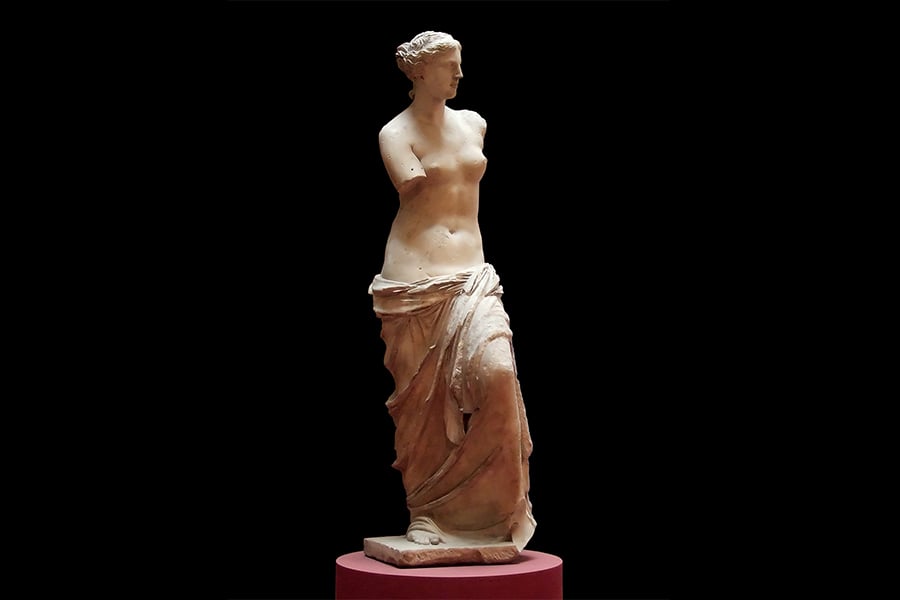
Among the illustrious ancient Greek sculptures, one figure reigns supreme as an embodiment of love and beauty—Aphrodite, known as Venus in Roman mythology.
This renowned sculpture, named after the island of Milos where it was unearthed, stands as a timeless masterpiece.
Permanently housed at the Louvre in Paris, the sculpture of Aphrodite captures the hearts and imaginations of all who behold her.
As viewers set their eyes upon this iconic representation, they are immediately captivated by the grace and elegance exuded by the goddess.
Crafted in exquisite detail, the sculpture radiates a sense of ethereal beauty and serenity. Aphrodite’s delicate features, her flowing drapery, and the enchanting expression on her face all contribute to the sculpture’s captivating allure.
The Milos Aphrodite holds a significant place in the annals of art history. It stands as a testament to the ancient Greeks’ mastery of sculptural techniques and their deep appreciation for the ideals of beauty and harmony.
Created during the Hellenistic period, this sculpture represents a pinnacle of artistic achievement, embodying the elegance and refinement that defined ancient Greek aesthetics.
Housed within the Louvre, one of the world’s most esteemed museums, the Milos Aphrodite continues to mesmerize visitors from across the globe.
As they stand before this timeless representation, they are transported to an era of myth and legend, where gods and goddesses roamed the ancient world.
The sculpture’s presence in the Louvre allows for a deep exploration of its artistic and historical significance, inviting visitors to delve into the rich tapestry of ancient Greek mythology and culture.
Aphrodite, the goddess of love and beauty, holds a special place in human consciousness, transcending time and cultures. As viewers engage with the Milos Aphrodite, they are invited to contemplate the universal themes of love, desire, and the idealization of feminine beauty.
This sculpture stands as a testament to the enduring allure of Aphrodite and her lasting impact on art and human imagination.
The Milos Aphrodite serves as a cherished link to the ancient world, a reminder of the remarkable achievements of ancient Greek civilization. It stands as a testament to the power of artistic expression, capable of evoking profound emotions and inspiring awe through the ages.
In the presence of this iconic sculpture, visitors to the Louvre bear witness to the timeless allure of Aphrodite, forever captured in stone, and appreciate the enduring legacy of ancient Greek art.
The Hope Diamond Necklace

Nestled within the hallowed halls of the Smithsonian Institution, the legendary Hope Diamond commands attention as one of the world’s most coveted gems.
This extraordinary gemstone, weighing a remarkable 45.52 carats and boasting a deep blue hue, is estimated to be worth an astonishing $250 to $350 million. Its exceptional beauty and immense value have made it a symbol of luxury and allure.
The journey of the Hope Diamond to its current home in the Smithsonian is a tale that adds to its mystique. In a surprising turn of events, the renowned jeweler Harry Winston, known for his extraordinary gemstone collection, casually mailed the diamond to the museum.
Enclosed within a plain brown wrapper, the precious gem traveled via registered mail, with its true identity known only to a select few.
This seemingly unassuming package belied the magnificent treasure it contained, further enhancing the intrigue surrounding the Hope Diamond.
Since finding its place in the Smithsonian’s National Gem Collection, the Hope Diamond has become a beacon for enthusiasts and curious visitors from around the globe.
Its magnetic allure draws countless visitors, making it one of the most visited museum objects in the world. People from all walks of life are captivated by the diamond’s dazzling brilliance, its deep blue depths capturing the imagination and sparking a sense of wonder.
Beyond its sheer beauty and astronomical value, the Hope Diamond holds a captivating history. Legends and tales of its supposed curse have only added to its mystique and fueled the fascination surrounding this rare gem.
As visitors stand in awe before the Hope Diamond, they become part of its illustrious narrative, connecting with the centuries of awe-inspiring stories that have accompanied this extraordinary gemstone.
The enduring popularity and universal appeal of the Hope Diamond serve as a testament to the timeless allure of precious gemstones and their ability to captivate the human spirit.
As visitors gaze upon this resplendent gem, they are drawn into a world of opulence and fascination, immersed in the brilliance and history that the diamond represents.
The Hope Diamond stands as a shining example of the remarkable treasures that grace the halls of museums, enriching our understanding of the world’s cultural and natural heritage.
Its presence at the Smithsonian continues to inspire awe, igniting a sense of wonder and reminding us of the incredible power held within the depths of the earth.
As a cherished gem of immeasurable value, the Hope Diamond invites us to explore the realms of beauty, history, and human fascination, serving as a testament to the enduring allure of the world’s most precious gems.
King Tutankhamun’s Treasures
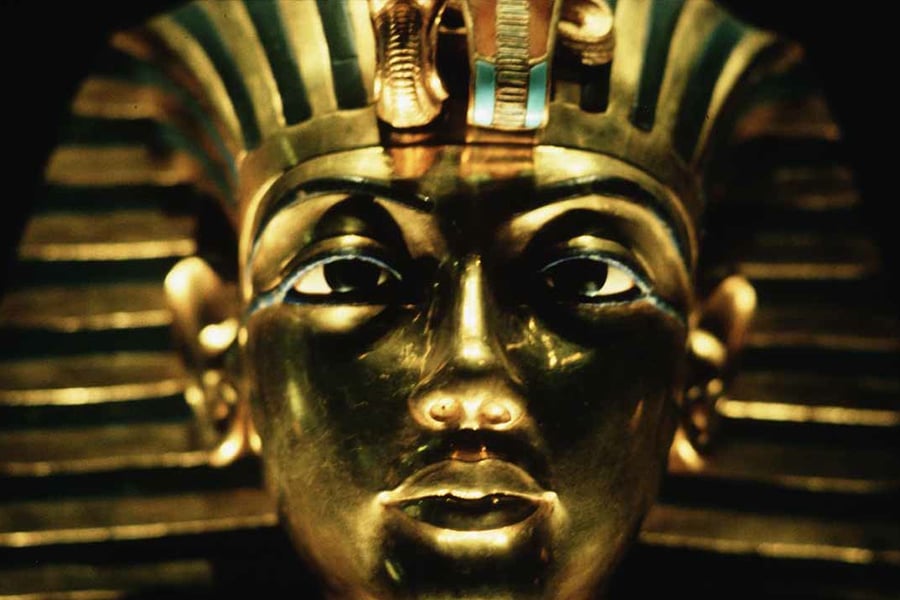
The allure surrounding King Tutankhamun, commonly known as King Tut, continues to captivate the world with his dazzling treasures and enigmatic legacy.
Among the remarkable artifacts associated with this young pharaoh, his casket alone holds an astounding value of approximately $13 million. This exquisite piece exemplifies the exquisite craftsmanship and opulence of ancient Egyptian art.
However, the significance of King Tut’s legacy extends far beyond the monetary value of his casket. His mummy and the relics discovered within his tomb offer an unparalleled glimpse into the grandeur and intricacies of ancient Egyptian culture.
These treasures provide a window into the beliefs, rituals, and lifestyles of a civilization that thrived thousands of years ago.
Normally housed in the Egyptian Museum in Cairo, these precious artifacts have garnered global attention and fascination. Exhibitions featuring King Tut’s relics have traveled extensively, showcasing the splendor of ancient Egypt to international audiences.
The opportunity to witness firsthand the treasures that once surrounded the young pharaoh allows visitors to immerse themselves in the rich tapestry of ancient Egyptian history.
From intricately designed jewelry to exquisite golden funerary masks, the relics from King Tut’s tomb offer a vivid portrayal of the lavish trappings that accompanied the elite in the afterlife.
The level of artistry and attention to detail displayed in these artifacts is a testament to the skilled artisans of ancient Egypt, who dedicated their talents to creating objects of eternal beauty and significance.
Beyond their aesthetic appeal, these treasures possess immense historical and cultural value. They contribute to our understanding of the religious beliefs, burial practices, and royal customs of ancient Egypt.
The artifacts discovered in King Tut’s tomb have enriched scholarly knowledge and continue to inspire ongoing research, expanding our comprehension of this extraordinary civilization.
The international exhibitions of King Tut’s treasures have served as platforms for cultural exchange, fostering a deeper appreciation for ancient Egypt’s profound impact on world history.
The enduring fascination surrounding King Tut and the treasures from his tomb highlight the timeless allure of ancient civilizations and their enduring legacy.
As these relics continue to captivate audiences around the world, they serve as a reminder of the extraordinary achievements of ancient Egyptian culture and the indelible mark it has left on human civilization.
Through the preservation and exhibition of these treasures, the captivating story of King Tut and the splendors of ancient Egypt continue to be shared and celebrated, ensuring their legacy lives on for generations to come.
Michelangelo’s ‘David’
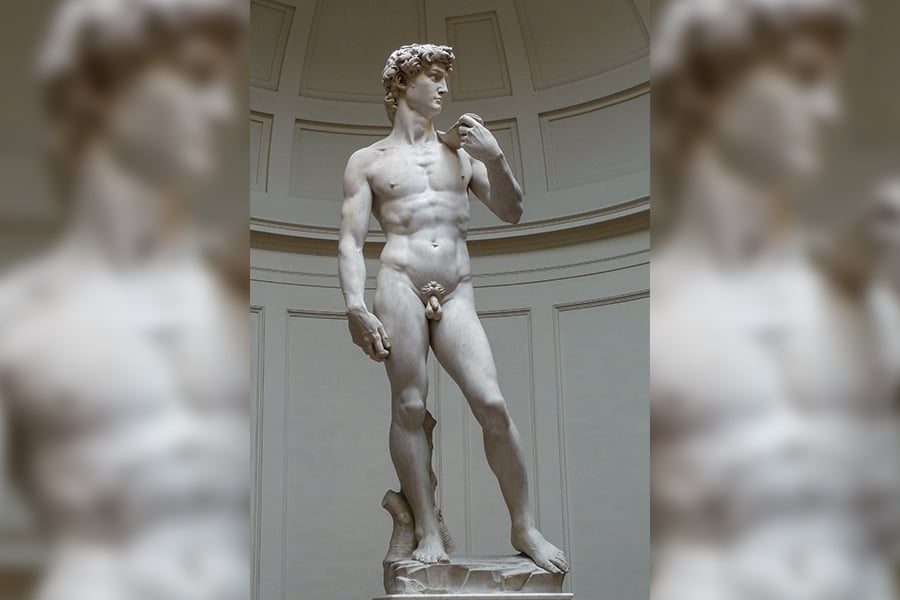
The awe-inspiring marble sculpture of David, a monumental masterpiece of Renaissance art, stands as a testament to both artistic genius and the spirit of the Republic of Florence.
Crafted by the legendary Michelangelo around the year 1500, this nude representation of the biblical hero David has become an iconic symbol of the defense of civil liberties.
As viewers lay their eyes upon this exquisite sculpture, housed within the esteemed Gallery of the Academy of Florence, they are immediately struck by the impeccable craftsmanship and the profound emotional depth captured in the stone.
Michelangelo’s David stands tall and resolute, his perfectly chiseled physique reflecting the idealized beauty of the human form. The sculptor’s meticulous attention to detail, from the intricately carved muscles to the determined expression on David’s face, evokes a sense of awe and admiration.
Beyond its aesthetic magnificence, Michelangelo’s David carries profound symbolism. In the context of the Republic of Florence, this sculpture came to represent the indomitable spirit and unwavering courage of the Florentine people in their defense of civil liberties.
David, depicted in his triumphant pose, embodies the idea of a common man rising above adversity and fighting for justice and freedom.
The cultural and historical significance of Michelangelo’s David extends far beyond the boundaries of art. It serves as a poignant reminder of the Renaissance era, a period characterized by profound intellectual and artistic achievements.
This masterpiece encapsulates the spirit of humanism, a philosophical movement that celebrated the potential and capabilities of the individual.
Housed within the Gallery of the Academy of Florence, David continues to captivate visitors from around the world. As admirers stand before this imposing sculpture, they are transported back in time, witnessing the remarkable talent and vision of one of the greatest artists in history.
The impact of Michelangelo’s David resonates through the centuries, inspiring generations of artists, scholars, and art enthusiasts.
In the presence of Michelangelo’s David, viewers are invited to contemplate the timeless themes of human strength, resilience, and the pursuit of freedom. This sculpture stands as a testament to the enduring power of art to transcend time and connect with the human experience.
Through its captivating beauty and symbolic resonance, David remains an everlasting embodiment of Renaissance ideals and a cherished treasure of the Gallery of the Academy of Florence.
The Parthenon Frieze
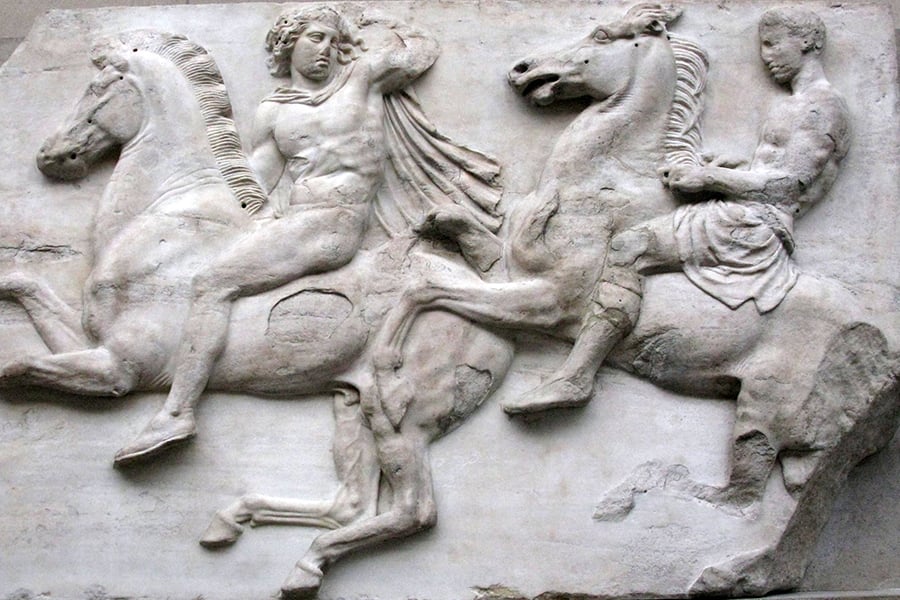
The sculpted marble depiction of the Great Panathenaia stands as a testament to the artistic grandeur of ancient Greece.
Originally crafted to adorn the upper part of the Parthenon’s inner chamber, this monumental masterpiece offers a glimpse into the magnificence of the ancient world.
Spanning an impressive length of 525 feet, the sculpture boasted an astonishing display of 378 figures and deities, accompanied by over 200 intricately carved animals.
Today, fragments of this remarkable artwork can be found in two renowned museums, each housing a portion of its splendor.
The Acropolis Museum, located in Athens, proudly presents 164 feet of the Great Panathenaia frieze. Here, visitors can witness the intricate details and artistic mastery that went into the creation of this monumental sculpture.
The fragments displayed in the Acropolis Museum offer a tantalizing glimpse into the larger composition, allowing viewers to appreciate the skill and vision of the ancient craftsmen.
An additional 262 feet of the Great Panathenaia frieze can be found in the British Museum, adding to the worldwide appreciation of this extraordinary artwork.
Here, visitors are granted the opportunity to immerse themselves in the grandeur of ancient Greece, marveling at the intricately carved figures and gaining a deeper understanding of the cultural and artistic achievements of the time.
The significance of the Great Panathenaia extends beyond its sheer scale and artistic brilliance. It represents a celebration of the Panathenaic Games, one of the most important religious and athletic festivals in ancient Athens. The frieze depicts the solemn procession that took place during these games, showcasing scenes of gods, goddesses, humans, and animals, all intricately intertwined in a breathtaking display of artistry.
The fragments of the Great Panathenaia frieze preserved in these two esteemed museums offer a rare glimpse into the cultural and artistic heritage of ancient Greece.
Through these remarkable fragments, visitors are transported back in time, witnessing the reverence and devotion of the ancient Athenians to their gods and the pride they took in their cultural traditions.
The worldwide dispersal of the Great Panathenaia frieze reflects the universal significance and appreciation of ancient Greek art and culture. Despite being fragmented, these remnants serve as a reminder of the immense beauty and enduring legacy of the Parthenon and the artistic achievements of the ancient Greeks.
Through the preservation and display of these fragments, the Acropolis Museum and the British Museum contribute to the ongoing dialogue and understanding of our shared human history.
The Great Panathenaia frieze stands as a testament to the artistic genius and cultural richness of ancient Greece, captivating visitors and scholars alike, and ensuring that the legacy of this extraordinary artwork lives on for generations to come.
Babylonian Tablet
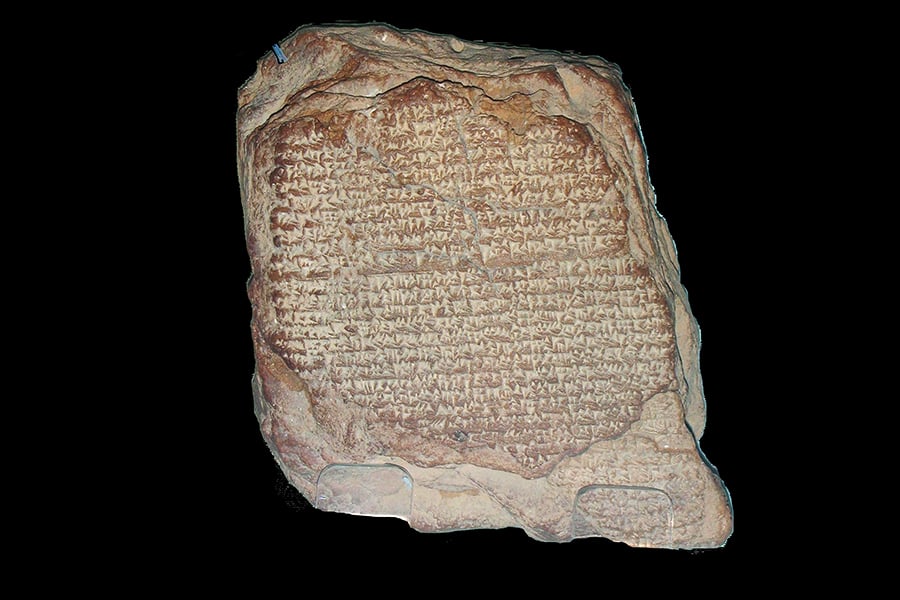
Nestled within the esteemed halls of the British Museum, a humble clay tablet dating back 4,000 years holds a remarkable tale of discontent and frustration.
This ancient artifact, inscribed with cuneiform script, serves as the oldest known customer service complaint ever discovered. Its contents relay the dissatisfaction of a copper merchant named Nanni, hailing from the year 1750 B.C., as he expresses his grievances regarding the quality assurance and service provided by a certain individual named El-nasir.
As visitors gaze upon this humble clay tablet, they are transported back in time to the bustling world of ancient Mesopotamia. The cuneiform script, etched delicately onto the surface, tells a story of commerce and human interaction that resonates across the millennia.
Nanni’s words, preserved on this ancient medium, offer a glimpse into the daily concerns and frustrations faced by individuals engaged in business transactions even in the distant past.
The tablet not only bears witness to the intricacies of commerce in ancient Mesopotamia but also attests to the enduring nature of human nature itself. Nanni’s complaint highlights the timeless challenges of maintaining quality standards and delivering satisfactory service.
It serves as a reminder that the pursuit of excellent customer service is a concern that spans the ages and resonates with individuals from every era.
Now safeguarded within the British Museum, this ancient clay tablet stands as a testament to the ingenuity and sophistication of ancient civilizations. Its preservation offers modern-day audiences a unique opportunity to connect with the past, to witness the concerns and frustrations of individuals who lived thousands of years ago.
As this remarkable artifact joins the vast collection of historical treasures in the British Museum, it serves as a valuable reminder of the multifaceted nature of human history. From grand monuments to humble clay tablets, each piece contributes to the rich tapestry of human experience.
The 4,000-year-old complaint of Nanni, preserved on this unassuming clay tablet, invites visitors to reflect on the timeless quest for quality assurance and exceptional customer service—a quest that spans centuries and unites us with our ancestors.
The discovery of this ancient customer service complaint expands our understanding of ancient societies and their intricate systems of commerce and communication.
It reinforces the idea that even in the distant past, individuals sought a certain level of satisfaction and were willing to voice their concerns when their expectations were not met.
As visitors explore the British Museum and encounter this fascinating clay tablet, they are presented with a tangible connection to our shared human history.
It serves as a reminder that the pursuit of quality and satisfaction in business transactions is a pursuit as old as civilization itself.
Alabaster Relief from Palace of Nimrud
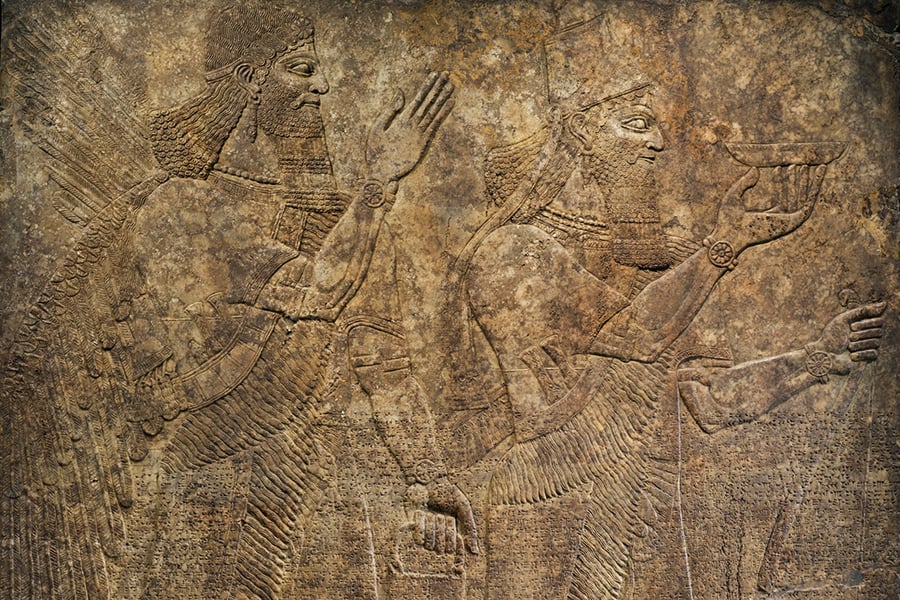
The majestic relief depicting King Ashurnasirpal II, now residing within the halls of the Louvre, serves as a captivating glimpse into the grandeur of ancient Assyrian art and architecture.
Originally hailing from the palace of Nimrud in Assyria, this remarkable artwork once adorned a section of an unbaked brick wall, representing a distinctive architectural style that emerged in the 9th century B.C.
As viewers set their eyes upon this intricately carved relief, they are immediately drawn into a narrative of power, authority, and royal grandeur. King Ashurnasirpal II, a formidable ruler of the Assyrian Empire, is depicted with an aura of majesty and strength.
The relief showcases the king’s royal regalia, including his distinctive headdress and ceremonial attire, symbolizing his authority and divinely ordained role.
The relief not only celebrates the figure of Ashurnasirpal II but also serves as a testament to the artistic prowess and cultural achievements of the Assyrian civilization.
The meticulous attention to detail, the exquisite rendering of facial features, and the intricate patterns adorning the relief reflect the mastery of Assyrian craftsmen and their commitment to artistic excellence.
The palace of Nimrud, where this relief originated, was a hub of political and cultural activity during the reign of Ashurnasirpal II.
It was a testament to the Assyrian Empire’s wealth, power, and architectural ingenuity. The relief’s placement on the palace wall would have added a touch of grandeur to the surroundings, creating an awe-inspiring environment for visitors and conveying the king’s dominance and divine legitimacy.
Through its journey to the Louvre, this magnificent relief finds itself in the company of other masterpieces from around the world, forming a rich tapestry of human history and artistic achievement.
Housed within the prestigious walls of the Louvre, it continues to captivate audiences, offering an immersive experience that transcends time and connects present-day viewers with the splendor of ancient Assyria.
The relief featuring King Ashurnasirpal II stands as a testament to the enduring legacy of the Assyrian civilization, their artistic vision, and their contributions to human civilization. It invites visitors to delve into the world of ancient kings, mighty empires, and the artistic traditions that defined an era.
Through its intricate details and commanding presence, this relief showcases the brilliance of Assyrian artistry and provides a window into the rich cultural heritage of the ancient Near East.
Summary
these exceptionally valuable artifacts showcased in museums around the world offer us a window into the past, providing insights into the diverse cultures and civilizations that have shaped our world.
From Leonardo da Vinci’s enigmatic Mona Lisa to the Rosetta Stone, the Dead Sea Scrolls, and King Tutankhamun’s treasures, each artifact holds immense historical, cultural, and artistic significance.
These artifacts not only serve as testaments to the skill, creativity, and profound legacy of their respective civilizations but also offer invaluable knowledge to researchers and the public alike.
Through their study and preservation, we gain a deeper understanding of the customs, beliefs, and ways of life of our ancestors.
Moreover, these artifacts transcend their physical forms and carry symbolic importance. They embody human curiosity, the pursuit of knowledge, and the power of connection across time and cultures. They remind us of our shared heritage and the enduring impact of ancient civilizations on our modern world.
As visitors stand before these remarkable artifacts, they are transported to different eras and immersed in the rich tapestry of human history.
These treasures represent a collective effort to preserve and appreciate our cultural and historical legacy, ensuring that future generations can continue to learn from and be inspired by them.
In essence, these valuable artifacts are not just objects of monetary worth, but they are guardians of our collective memory, providing a tangible link to our past and enriching our understanding of the human experience.
They remind us of the importance of preserving and celebrating our cultural heritage, fostering a sense of appreciation, curiosity, and connection that transcends time and borders.
**Please note that this post may contain affiliate links. When booking through one of our links, we earn a small kickback at no extra cost to you and it’s a big help to keep the site up and running.





